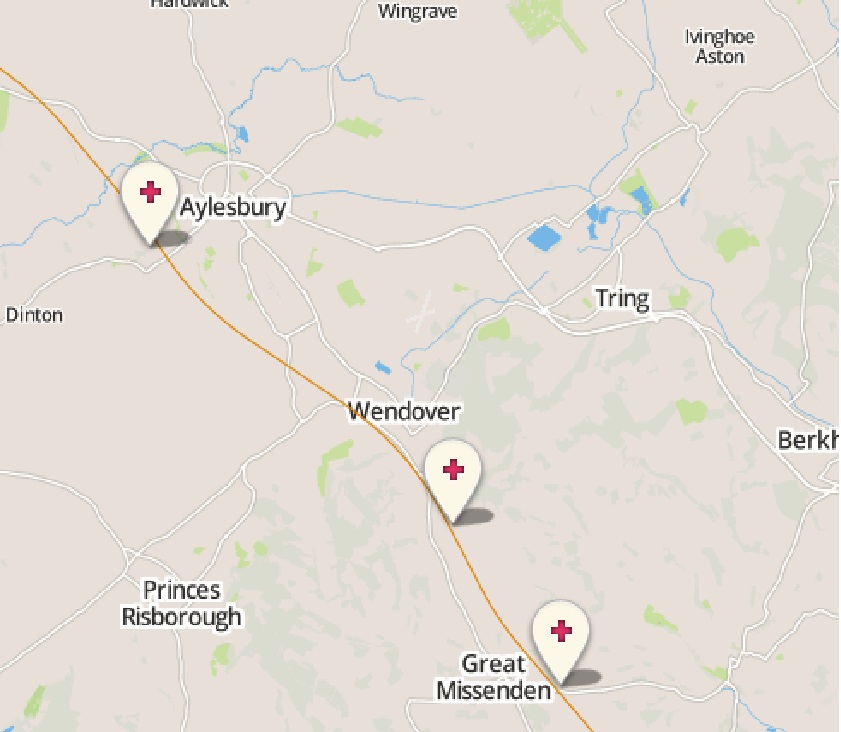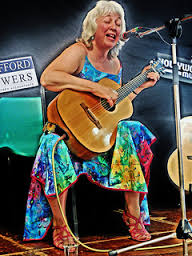About this Song
The constant battle of progress versus conservation continues as we try to shape our world and compete in the modern age whilst enjoying our natural heritage.
The song takes us through a birdseye view of a year in the life of the Chilterns, starting with winter and spring on Chinnor Hill, summer on Dunstable Downs and the surrounding area in the second verse, and finishing with autumn and winter at Chinnor. The redwings remain undisturbed feeding from the berries there but for how long?
We are lucky to live in an area of mainly unspoilt beauty in a landscape which has been dominated by chalk for thousands of years. A few years ago, to mark an important birthday, I went on a balloon trip from Great Missenden that took me over Chinnor Hill and Bledlow Ridge, following the route of part of the ancient Icknield Way which there combines with the Ridgway. This chalky landscape supports a host of wildlife and in other areas has led to the start of many industries. Chalk for cement is still quarried at Kensworth as is 'freestone' at Totternhoe for decorative building and sculpting. In Medieval times the properties of chalk enabled part of Dunstable Downs to be turned into a rabbit warren which is now protected by English Heritage. In the past chalk was also used for whiting to make whitewash, but this industry had died out by the 1960's.
Industry, of course, brought more demands on transport. In Dunstable, for instance, the railway arrived in 1858, much to the concern of the coachmen, who feared a loss of business, and who hastily dug out the chalk cutting in the attempt to make the roadways more accessible and attractive. But although the railway proved to be popular, eventually Dunstable North Station (the subject of Flanders & Swan's song 'Slow train' of 1964) became a victim of Beeching's cull and was closed forever in 1965. The subsequent increase in road traffic has resulted in severe congestion which various schemes have failed to resolve. A recent solution has been to re-open the old rail route but as a road on which to run a super-fast bus shuttle to Luton. It seems that Dunstable will remain one of the largest towns in the South East to have no rail station.
The Whipsnade chalk lion was designed by R.B. Brook-Groves in 1931 and carved out of the chalk grassland on Dunstable Downs as a landmark advertisement for Whipsnade Zoo. The Zoo was an offshoot of the established London Zoo, and opened as a zoological park in 1931 on the site of a derelict farm acquired in 1928. In the Second World War it was cleverly disguised with netting, turf and paint. It was renovated in 2005 when the lighting was repaired, at which time it was discovered that it had been colonized by wallabies and cavies, all living happily in harmony!
Dunstable Downs is also the home of the London Gliding Company, established in 1930. In 1938 a new world record was made there for the longest endurance flight in a two-seater glider. Another favourite pastime on the Downs is the flying of kites and paragliding over the landscape which is a National Trust site. The red kites have also discovered this natural playground.
Little did I know in 2008 that my balloon trip would reveal to me some of the beautiful countryside that soon was to be the subject of discussion by civil engineers. The highly controversial proposed route of the HS2 which, on completion, will link London to Birmingham is, of course, on everybody's mind at present. Almost every part of the route has provoked objections from somebody, not least the Wildlife Conservationalists. A Parliamentary debate that took place in October 2011 did not result in the abandonment of the scheme, and on 10.1.12 the Government gave the go-ahead to it. HS2 Ltd. are now compiling a Hybrid Bill to be debated in Parliament by the end of 2013 with a view to receiving Royal Assent by 2015. The UK, it seems, must have a high speed rail network to compete with Europe and the long-term plan is to open the HS2 in 2026.
Phil Hammond, Secretary of State for Transport between May 2010 and October 2011, also insisted that "this will allow the economies of the Midlands and the north to benefit much more directly from the economic engine of London". But in April 2012 a complaint was made to the European Commission by the BBOWT and now the Government have agreed for a Strategic Environmental Assessment to be carried out on the impact to nature reserves. The argument for this was greatly assisted by the discovery of Bechstein Bats in Bernwood, a species protected under EU and UK wildlife law. In addition there is concern that damage to the chalk aquifer caused by tunnelling could result in drying up of the River Misbourne and the collapse of the tunnels. This could affect the water supply. In the meantime the wildlife continue to thrive and move around the landscape more efficiently than we do! Objections may result in a change to the route but the Government, from the comparative safety of Westminster, will eventually announce a date for the commencement of work on the HS2. The cost will be astronomical.
Whatever alterations we make to our landscape will affect the creatures who live there, including us! Some, like the chalkhill blue butterflies have found a new habitat in the chalk cuttings exposed by the twin tunnel constructed for the Weston Hills bypass near Baldock which opened in 2006. Will the people who are evicted from their houses to make way for the HS2 be so fortunate? Butterflies and birds will always have the edge on us with regard to freedom of movement, in spite of our mimicry of their flight.
Next to our village of Wing, lie Cublington and Stewkley, and it is fair to say that without the determination of their inhabitants, Wing would not now exist. In 1970 Cublington and its neighbours successfully fought the proposals to build a third airport there. Stanstead was not so fortunate! In 1972 Bucks County Council, in gratitude for the success of the campaign, planted a spinney of trees at what would have been the centre of the airport site with a plaque quoting from Henry James the immortal words:"Midmost unmitigated England."
It is interesting that the Chilterns has been the subject of such fierce debate in Parliament with regard to the route of the HS2, when, for 400 years, the sinecure Crown office of Bailiff of the Chiltern Hundreds has been used as a handy get-out clause for MP's. A law passed in 1624 had made it illegal for them to resign. The Chiltern Hundreds was an area comprising Stoke, Desborough and Burnham, which was divided into 'hundreds', meaning that each place supported 100 households. It was originally wild woodland known to be inhabited by outlaws which therefore needed some supervision. However, by the 16th Century the area had become civilized and there were no duties to perform for the office. In 1701 the Act of Settlement decreed that any officer of the Crown must give up their seat in Parliament so by accepting this office today an MP would be obliged to leave their seat. Justine Greening, MP for Putney, was unlucky enough to be made Secretary of State for Transport in October 2011 and was only in office for 11 months, just long enough to announce the unpopular decision in January. She was not, however, made Bailiff of the Chiltern Hundreds, but was moved in September this year to the new office of Secretary of State for International Development. She was unhappy about it, apparently because she would be unable to fight for her constituents against the plans for extending the third Heathrow runway. Her successor has inherited the backlash of the HS2 decision and the inherent unpopularity. Who would be in his shoes? Another 'political casualty' of the HS2 debate is MP for Lichfield, Michael Fabricant, who, in September, resigned from the office of whip so he could protest against the proposed route.
How do we ensure that the decisions made on our behalf in London are fair to the people who live in the areas that will be affected by those decisions? Are we, in the Chilterns, a sinecure constituency, in danger of having 'sine cure' (without responsibility) decisions made for us? Will there be any 'unmitigated England' left at the end of it all? But which of us would, out of principle, refuse to go on the HS1 Channel Tunnel train which has proved to be a great success?
Sally Barnes 2012
|
.

